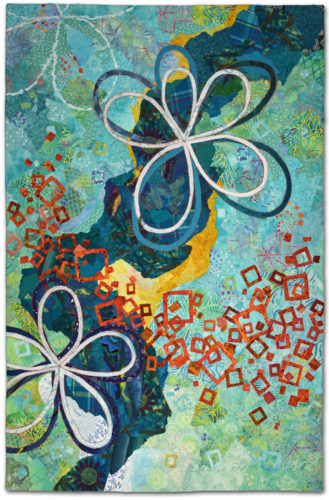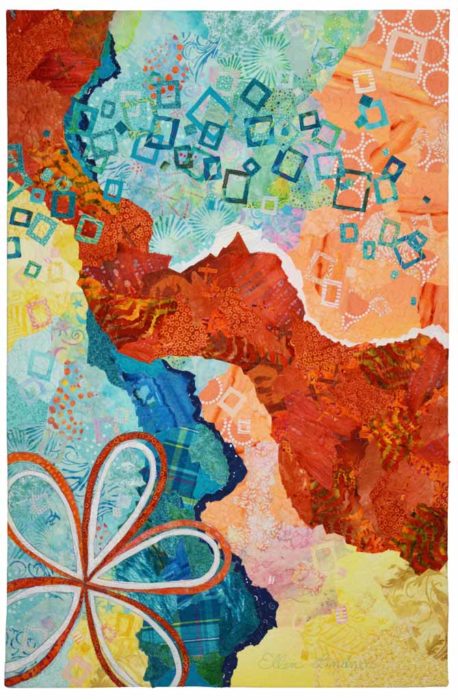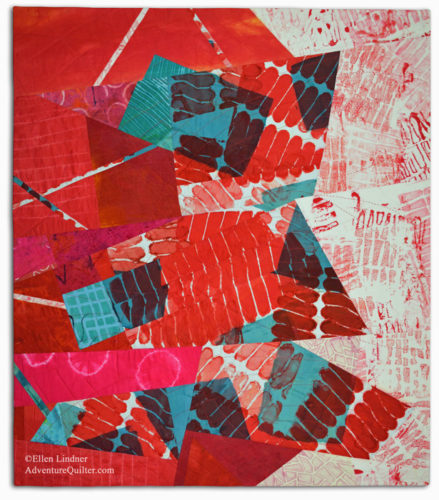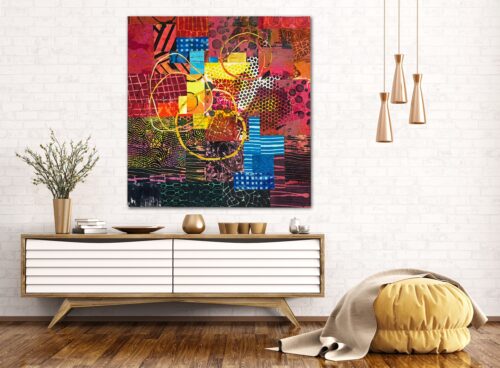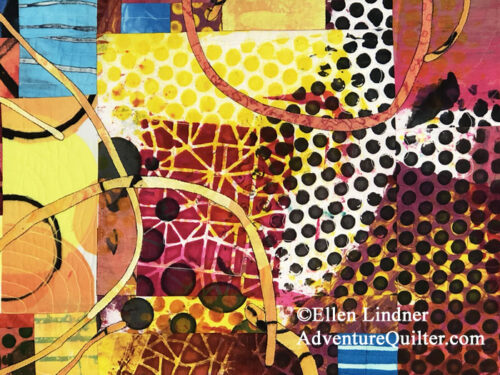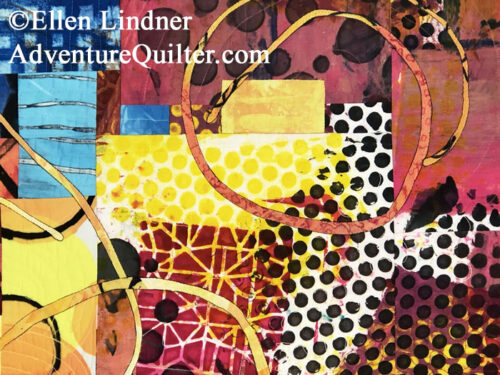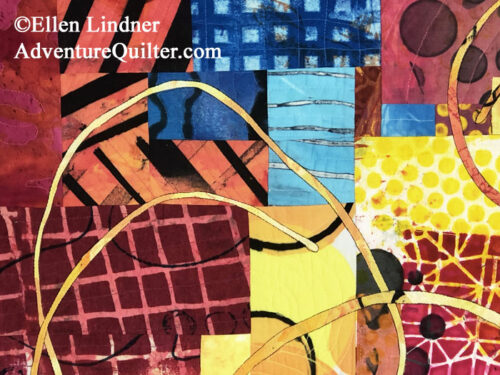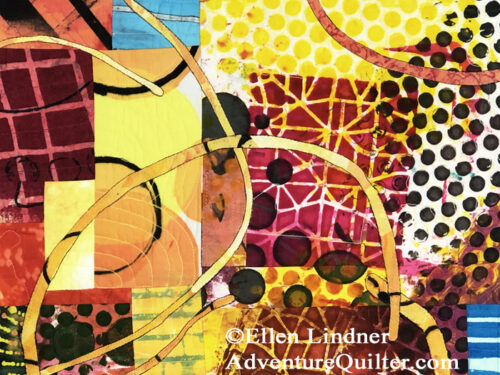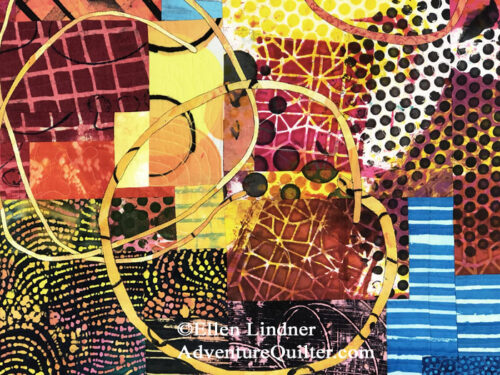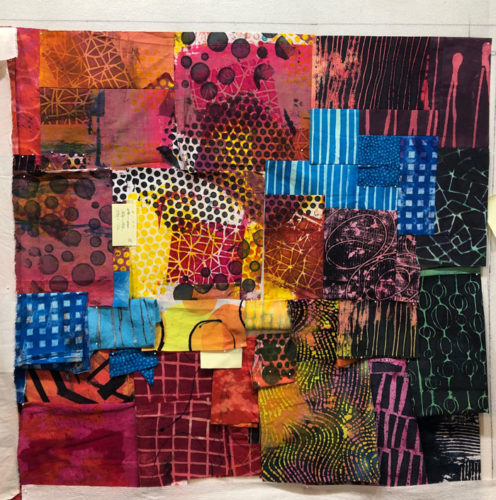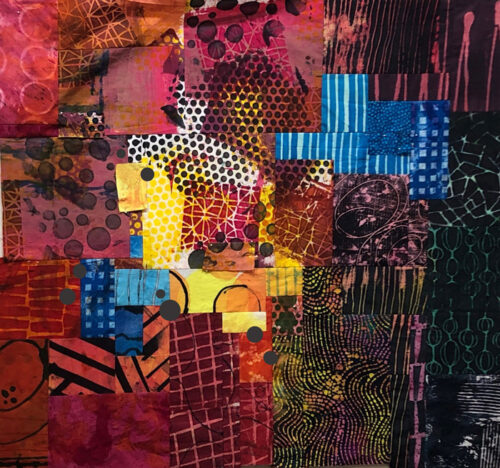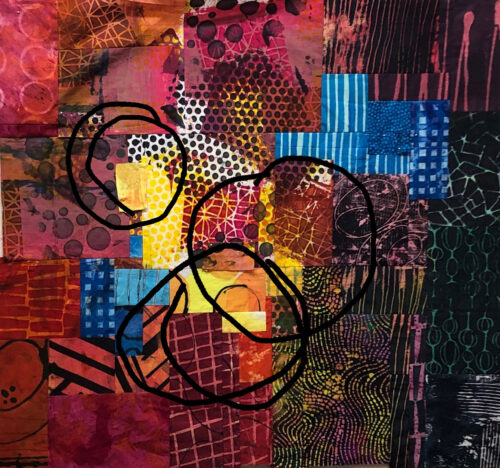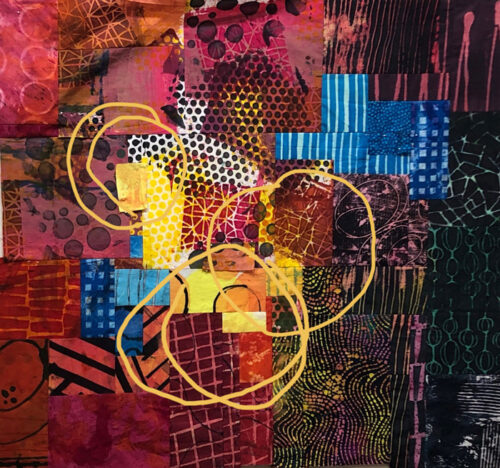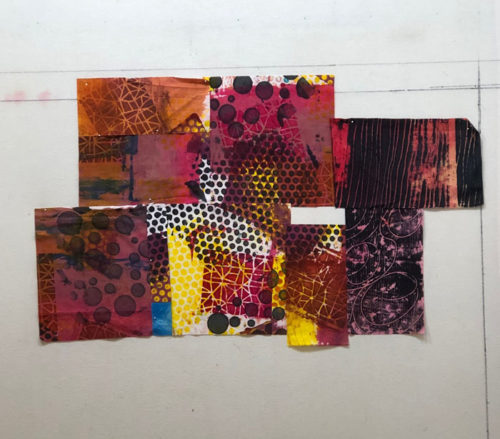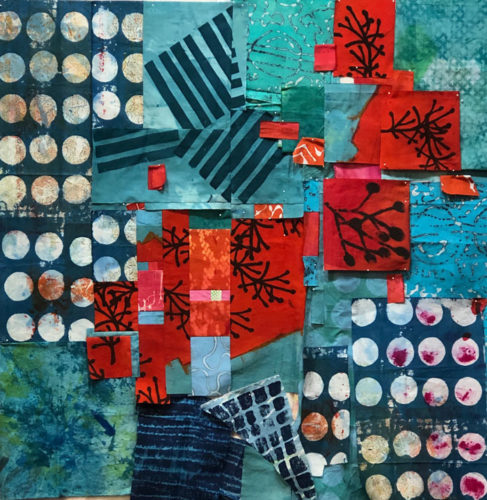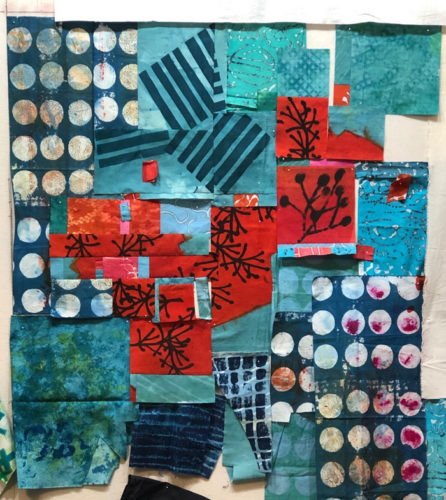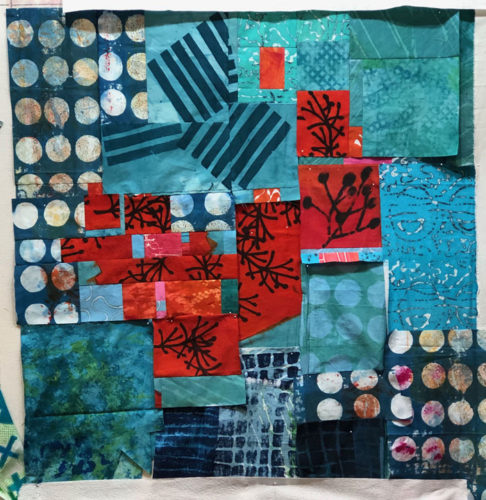
All quilters and textile artists face the question of what to do with their scraps. I mean, they MIGHT come in handy one day, so it would be good to keep them, right? But, that requires not only space, but some sort of organizational system so the scraps can be seen and used. And what size should be saved? Only yardage or tiny bits?
(I’ve visited some quilt guilds which collect tiny scraps and use them as stuffing for dog beds which they donate to a local shelter. A pretty good idea, I think.)
When I was using commercial fabrics I didn’t feel the need to save very small pieces of fabric. But now that I’m dying my own fabric those little scraps have become much more precious to me. Alas, I end up saving a lot of small bits. But then, what should I do with them?
Recently, I’ve started stitching these little pieces together, with no thought about color or matching. I just find two pieces that are approximately the same length and join them together. After a while I’ll have units that will fit each other and I can proceed with a little trimming and pressing as a go. Still without a plan.
These little units were pieced with scraps from Happy Family, so they automatically had shared colors.

I put them next to one another just to see what it looked like. Interesting, I think.
In the midst of the scrap sewing I decided to participate in a fund raising activity for SAQA (Studio Art Quilt Associates.) Hey, some of these little units could be used for that!
This call for art was rather unusual in that it called for art of one size, but with plans to display the pieces matted to a different size. That kinda threw me, since I felt like I had to make the composition look good at both sizes. Here it is full size, a whopping 6 x 8. (Note that we were not supposed to finish the edges.)

And here’s what it will look like when matted. (4.5 x 6, if I remember correctly.)

Not bad, I think. I hope it will generate some bidding.
More recently, I decided to make a “prayer”/art flag. At only 5 x 8, I knew my scrap units would once again do the trick. And they did.

My scrap units are now looking rather picked over. But, I now know they’re worth having around so I’ll be making more of then. Every now and then.
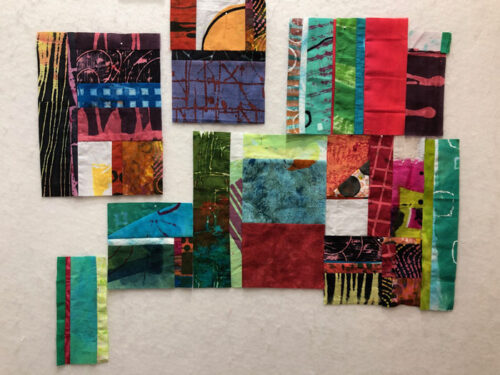
And it just occurred to me that these could be pieced by hand, too. So, I could use them as a hand project, too. (Now I’m cooking.)
Ellen Lindner




